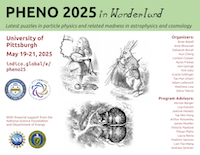Speaker
Description
The traditional quark model accounts for the existence of baryons, like protons and neutrons, which consist of three quarks, as well as mesons, composed of a quark and antiquark pair. Only recently has substantial evidence started to accumulate for exotic states composed of four or five quarks or antiquarks. In this study, the CMS Collaboration investigates the recently discovered family of three tetraquark candidates composed of four charm quarks and antiquarks. The exact nature of their internal structure remains uncertain. They could either be tightly bound states of true tetraquarks, similar to quarks bound within protons and neutrons, or molecules composed of two familiar mesons, loosely bound like protons and neutrons in a nucleus, with other potential configurations still being considered. Angular analysis techniques for decay products, developed for the discovery and characterization of the Higgs boson, are now being applied to the new exotic states. The quantum numbers for parity P and charge conjugation C symmetries are found to be +1. The spin J of these exotic states is most consistent with J = 2h, a value that is uncommon for such particles, while the J = 0h and 1h are excluded at 95% and 99% confidence level, respectively. The J^PC = 2++ quantum numbers match the expected values for tetraquarks with specific configurations of spin and angular momenta of its components, which helps in narrowing down the tetraquark’s internal structure.

